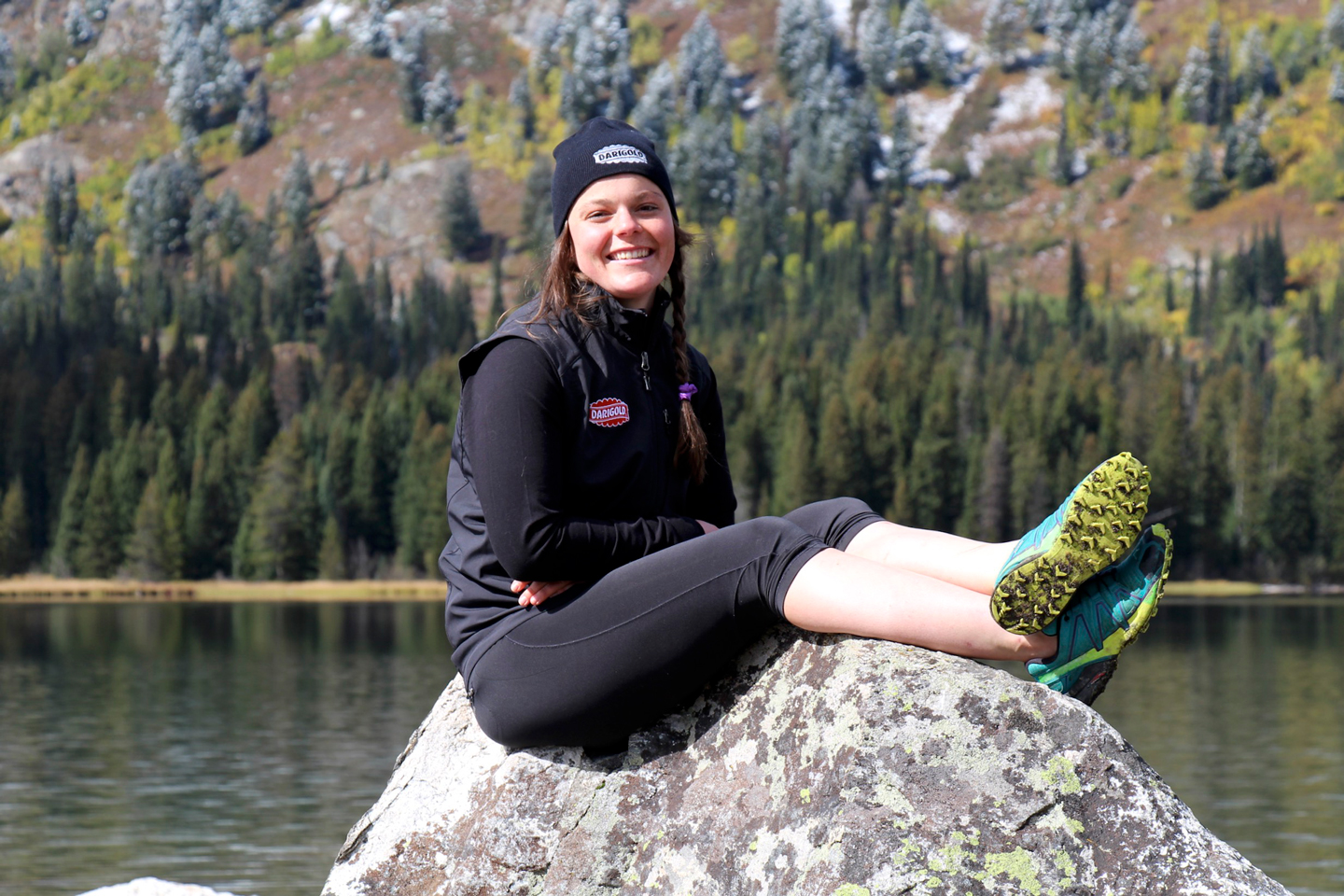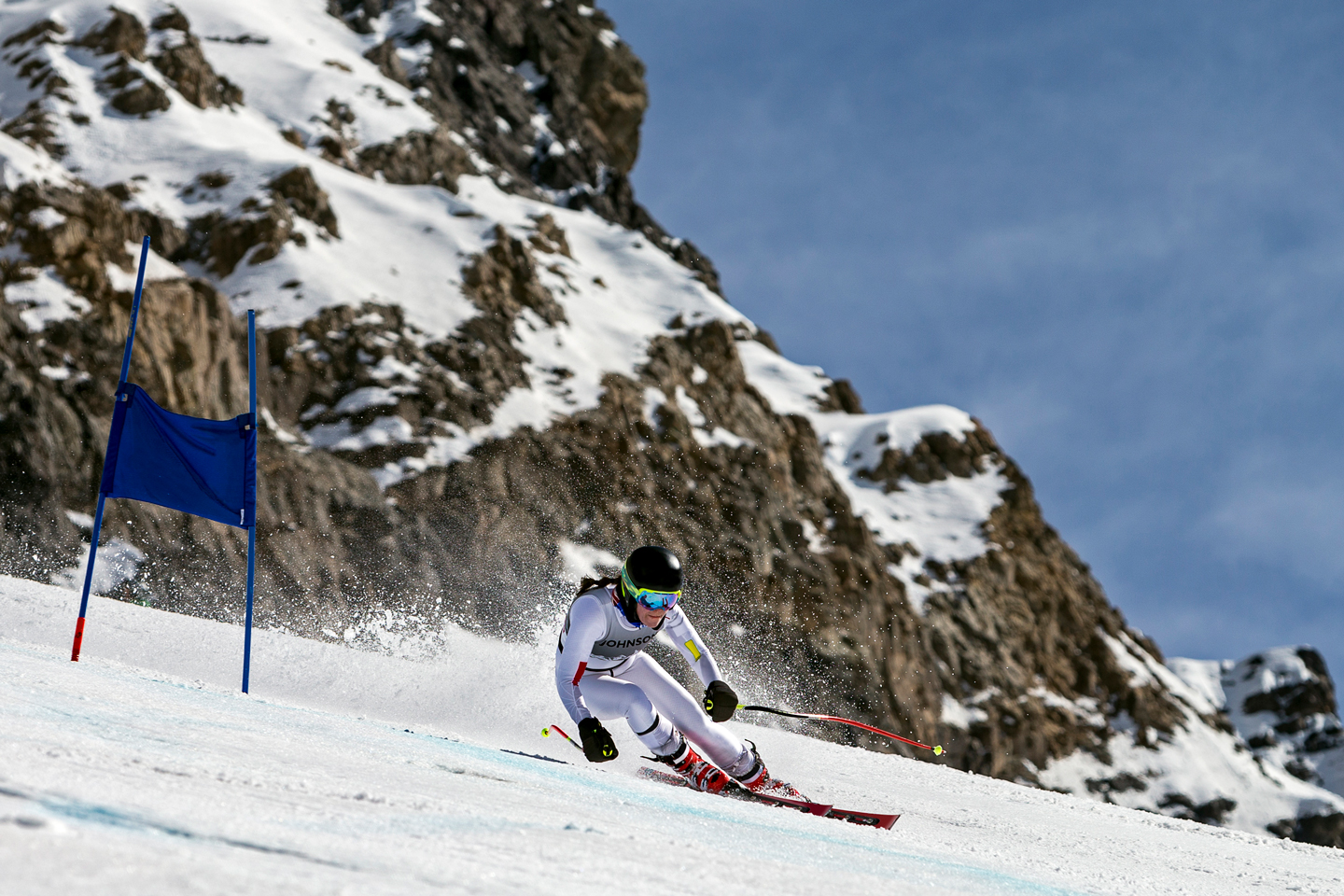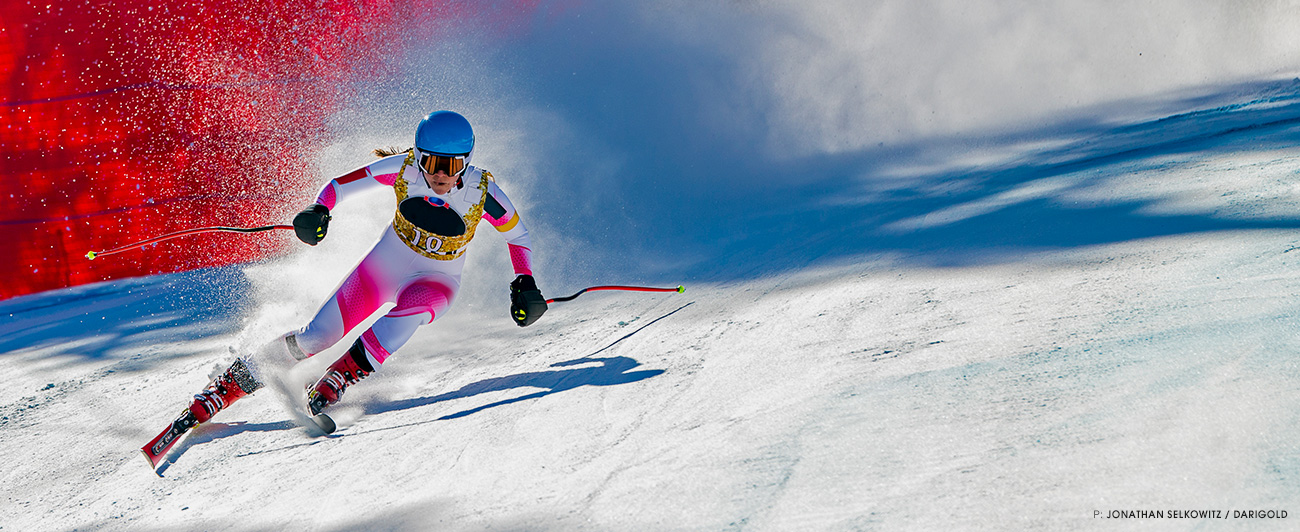Profile
Too Fast to be Scared with Breezy Johnson
Unless you’re a professional ski racer, Breezy Johnson is likely faster than you. And even if you are, you’re going to have a tight race on your hands.
For proof, just look at the 21-year-old Johnson’s resume and list of upcoming events. She just finished her second season on the World Cup circuit with the U.S. Ski Team, specializing in Downhill and Super G events. In her first season on the World Cup circuit, Johnson claimed the title in the downhill event in Aspen. As 2018 approaches, she’s also a promising candidate to compete at the Winter Olympics in South Korea.
Hailing from Victor, ID, Johnson was raised on hot laps at Jackson Hole Mountain Resort, WY, but she’s since spent her winters traveling on an almost weekly basis in pursuit of her racing career, which has skyrocketed since she landed on the US Ski Team. Now enrolled at Western Washington University, she’ll use her time between race seasons to study and recuperate at sea level in Bellingham, WA.

ABOVE: Renee Glick/Darigold
Johnson refers to her rise in the ski racing ranks as “meteoric,” which is also an apt way to describe the way she ended her 2017 season—with a crash and tibial plateau fracture at the World Cup event in Aspen in March. Prior to that, she was second only to Lindsey Vonn as the fastest American woman in the World Cup downhill event.
In the months before, she earned a 10th place finish in Italy and 11th in Lake Louise, AB, both World Cup events. More importantly, however, was her placement on the World Cup team before the crash: the top four US athletes from each event qualify for the Olympics, and Breezy managed to finish fifth on the team in 2017 despite two major crashes (the other being in South Korea). As a first-year World Cup athlete, that alone was remarkable, and helped earn her a place on the team for the upcoming season.
Perhaps more remarkable, however, is her resolve in the face of a season-ending injury; she’s since recovered, and is focusing on both her studies and landing that requisite fourth-place finish on the US Ski Team to get her to the Olympics.
She just needs to pass her finals first.
The Ski Journal: How was it growing up skiing Jackson? That’s a powder junkie’s dream.
Breezy Johnson: It was amazing. It never gets old, I can promise you that. I think Jackson is any skier’s dream either as a racer or a powder junkie or; in my case, it’s some combination of the two. We used to train under the lights after school every weekday at Snow King, which is right in the town of Jackson and then we would rip Jackson Hole Mountain Resort (“the village” as we locals call it) every weekend like a bunch of freed Tasmanian devils. I think a lot of who I am as a person and as a skier was built around Jackson and all that it has to offer and I could not think of a better place to grow up.
How long have you been racing?
Since before I can remember. I’ve been skiing since age 3—I learned in my driveway. I think my first race was when I was four or five. I had purple bibbed snow pants with my stuffed fox, Foxy, strapped into the suspenders.
What do you feel are your greatest strengths? Weaknesses?
I think charging is one of my greatest strengths. I can just let the skis go and find the speed and let go of any mistakes I make. I think my greatest ski weakness is that my technique is not as good as some. My skiing isn’t pretty but I make it work!
Tell us about the scariest race or run you’ve ever skied.
I try to not be afraid of anything, even if my better judgement tells me that things look a little sketchy. That makes it hard to come up with one particular instance.
My first FIS Super G in Panorama, Canada was pretty tough though. I was racing dead last (around 80-something) because I had just become FIS eligible. I think I my run was about two hours later than it was supposed to be, because there were so many crashes. In the course report they told me about a massive hole forming next to this one gate and just said, “It’s all blue, so just avoid the massive blue spot.”
I managed to finish with a decent result though which was positive. I don’t know if I knew how scared I was at the time. I was bouncing around so much I could barely see, and just focused on going down fast.

ABOVE: Jonathan Selkowitz / Darigold
The crash where you blew up your tibial plateau was pretty brutal. How have you gotten through the whole process?
Well, I honestly considered myself very lucky from day one of my injury.
I know that crash looked bad, and it was very scary for me to experience, but even lying there afterwards, I knew I was going to be okay. My emotions yo-yoed a lot as we assessed the crash. I skied to the finish and was thinking, I’m going to be just fine in a couple days. Then my physio and team doctor thought I might need emergency surgery or that I was going to go into shock.
After that, the diagnosis was a tibial plateau fracture, but then there was speculation I had a torn ACL, which is a far worse injury. Finally, almost 24 hours later, I saw a specialist who informed me that my ACL was intact and all I had to do was go three weeks non-weight bearing. It was a rough ride for sure, but I was going to work as hard as I possibly could to come back for the Olympics. This is also part of why I am so excited to partner with Darigold and Milk Life, because protein and calcium were important for me in my recovery. When Milk Life reached out, I thought it was the perfect time to partner up with them and work directly with Darigold!
Heroes?
Hermann Maier, who was a great Austrian ski racer during the years I was going up. I watched Bode Miller and Lindsey Vonn as a kid, and Shawn Johnson, the Olympic gymnast. We have the same last name and the same birthday, but she’s 4 years older. She was amazing in Beijing, but I also really admire her ability to lose, which she did to an extent, with the utmost class. I think she’s incredible.
Mentors?
I have so many—all of my teammates are mentors to me, now including Lindsey Vonn. Also, Mikaela Shiffrin, who isn’t that much older than me, has been tearing up the World Cup circuit for a while now. Everyone on the U.S. team has been super supportive and been helping me get to their level. Although we all compete against each other, we are very supportive and helpful and at the end of the day, we all race our own race.
What’s next?
Right now, I’m just trying to remain focused on the coming months and enjoy the ride. I definitely want to make my first Olympics [in 2018], and I would love to get either a World Cup or Olympic podium placement, but I’m also trying to be kind to myself and understand my “meteoric” rise last year doesn’t mean [I have to do it again this season]. While I would love to have another incredible season, I don’t want to hold myself accountable or beat myself up if I don’t continue on that crazy trajectory.
If you could give people one bit of advice for skiing fast, what would it be?
Be brave. Everyone is scared to go fast, either in the course or out, but you have to be brave. This can apply to every aspect of skiing, including physically working hard as well as ignoring the voice in your head telling you to slow down. Even I have one.
